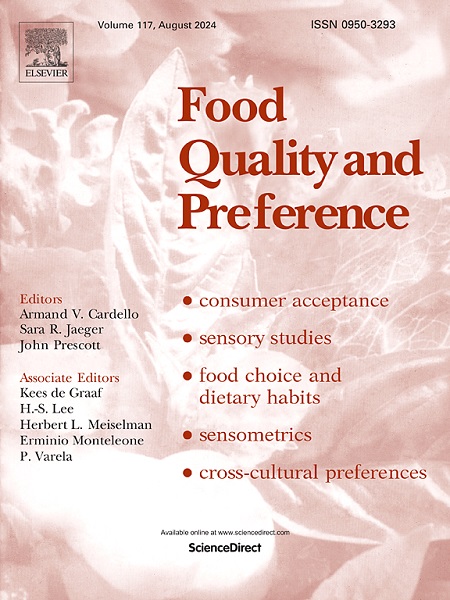Turning waste into wealth: Vietnamese consumer willingness-to-pay for upcycled biscuits
IF 4.9
1区 农林科学
Q1 FOOD SCIENCE & TECHNOLOGY
引用次数: 0
Abstract
Food waste is unethical, costly, and depletes the ecosystem. Upcycled food production ranks above animal feed production in food waste management, except for prevention and redistribution. Brewer's spent grain, a by-product of the brewing industry, is rich in protein and fibre, making it a great biscuit fortifier. Brewer's spent grain is nutritious, however adding BSG to meals may affect texture, flavour, and consumer acceptance. This study investigates the mediated effect of consumer awareness of by-product ingredients on buying intent. A choice experiment has been used to assess trade-offs among various product attributes, including ingredients, sensory characteristics, nutritional content, sustainability information, and price. Mediation analysis showed that consumers who learn about upcycled ingredients are more likely to buy them. This effect was caused by hearing upcycled ingredients, not awareness. Taste was the main reason consumers buy or not buy upcycled biscuits. The choice experiment indicated that consumers generally preferred low-priced biscuits produced with innovative flour (i.e., BSG), which also included a high fibre claim and an upcycled logo. Two consumer clusters existed based on their attitudes towards features impacting consumer choices. Consumers in cluster 1 (“Environmentalist”) exhibited the highest preferences for sustainability information, whereas consumers in cluster 2 (“Nutritionist”) demonstrated notable preferences for fibre content. Our findings show that customers will pay more for upcycled biscuits if they are informed of their nutritional and environmental benefits. Heterogeneous preferences across individuals significantly influences purchase decisions.
变废为宝:越南消费者愿意为升级再造的饼干买单
食物浪费是不道德的,代价高昂,并且会耗尽生态系统。除预防和再分配外,在食物浪费管理方面,升级食品生产高于动物饲料生产。酿酒工业的副产品,啤酒酿造的废谷物,富含蛋白质和纤维,是饼干的强化剂。啤酒酿造的废谷物很有营养,但在膳食中添加BSG可能会影响口感、味道和消费者的接受度。本研究探讨了消费者对副产品成分的认知对购买意愿的中介作用。选择实验用于评估各种产品属性之间的权衡,包括成分,感官特性,营养成分,可持续性信息和价格。中介分析表明,了解了升级回收成分的消费者更有可能购买这些成分。这种影响是由听到升级回收的成分引起的,而不是意识。口味是消费者购买或不购买升级再造饼干的主要原因。选择实验表明,消费者普遍更喜欢用创新面粉(即BSG)生产的低价饼干,这种饼干还包括高纤维声明和升级回收标志。根据他们对影响消费者选择的功能的态度,存在两个消费者群体。第一组消费者(“环保主义者”)对可持续性信息表现出最高的偏好,而第二组消费者(“营养学家”)对纤维含量表现出显著的偏好。我们的研究结果表明,如果消费者被告知饼干的营养和环境效益,他们会花更多的钱购买饼干。个体间的异质性偏好显著影响购买决策。
本文章由计算机程序翻译,如有差异,请以英文原文为准。
求助全文
约1分钟内获得全文
求助全文
来源期刊

Food Quality and Preference
工程技术-食品科技
CiteScore
10.40
自引率
15.10%
发文量
263
审稿时长
38 days
期刊介绍:
Food Quality and Preference is a journal devoted to sensory, consumer and behavioural research in food and non-food products. It publishes original research, critical reviews, and short communications in sensory and consumer science, and sensometrics. In addition, the journal publishes special invited issues on important timely topics and from relevant conferences. These are aimed at bridging the gap between research and application, bringing together authors and readers in consumer and market research, sensory science, sensometrics and sensory evaluation, nutrition and food choice, as well as food research, product development and sensory quality assurance. Submissions to Food Quality and Preference are limited to papers that include some form of human measurement; papers that are limited to physical/chemical measures or the routine application of sensory, consumer or econometric analysis will not be considered unless they specifically make a novel scientific contribution in line with the journal''s coverage as outlined below.
 求助内容:
求助内容: 应助结果提醒方式:
应助结果提醒方式:


